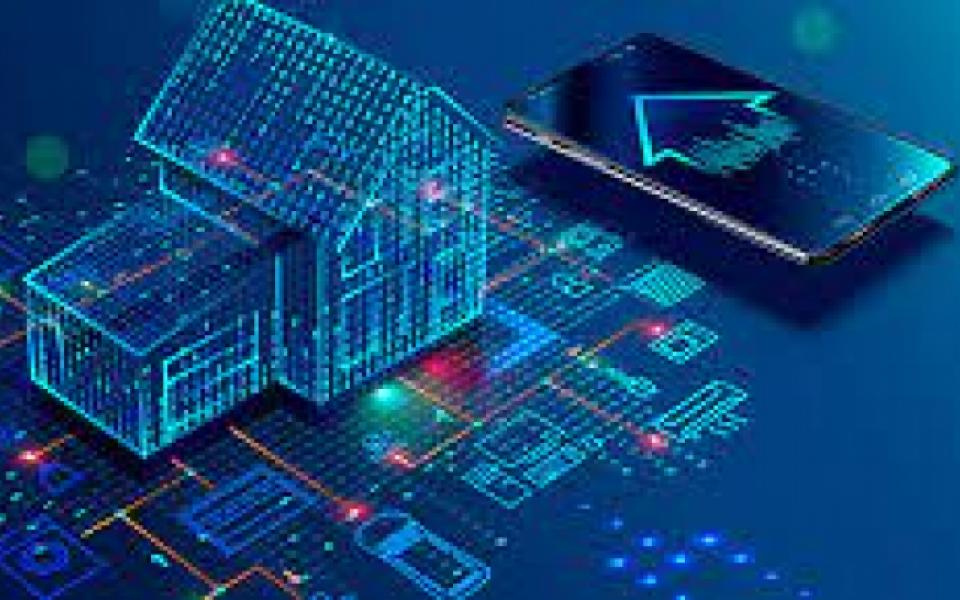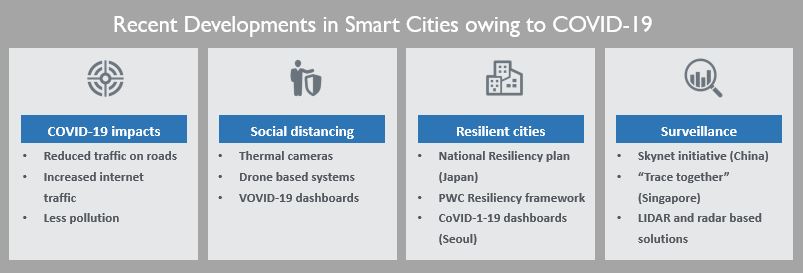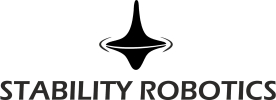Internet of Things (IoT) in Smart Environments Post-COVID-19
The economic and social disruption caused by the COVID-19 pandemic has also affected the way the IoT will be used in smart environments, specifically smart buildings and smart cities, post-COVID-19. The pandemic has enforced a considerable change in the priorities and activities of organizations and governments. However, on the contrary, these changes are proving to be a catalyst for technology and innovation. This article focuses on IoT’s adoption in smart homes, smart buildings and smart cities post COVID-19.
A smart environment is defined as “a small world, where all kinds of smart devices are continuously working to make inhabitants’ lives more comfortable” (by Cook and Das). Smart environments link computers and other smart devices to everyday settings and tasks to get a desirable output. For e.g. a smart environment can gather water and energy usage data from sensors, send that data to smart devices, and allow users to reduce their water and energy use accordingly.

Many aspects of urban life have been affected owing to COVID-19 pandemic including reduced traffic and public transport usage, changes in energy demand patterns, disruption in supply chains, etc. Governments are striving to improve their urban resilience and digital transformation to fight against COVID-19 and its impacts. Drones, new types of surveillance, digital twins, real-time dashboards and autonomous freights are among the technologies being deployed for the new use cases emerged during the pandemic.
Global response to COVID-19 impacts on Smart Environments
Despite the monetary strain, governments are investing heavily in technology to help combat COVID-19. Some global examples of key investments are:
- The Government of Singapore announced an increase in its investment towards digitalization by 30 percent increasing from $2.7 billion in 2019 to $3.5 billion in 2020, to boost the economy and support businesses recovering from COVID-19.
- China has also announced a dramatic increase in investments in IoT and related technologies such as 5G, smart grids, and data centers.
Below diagram summarizes the impact of COVID-19 on smart cities:

It can rightly be said that the cities that are “smarter” are more likely to be better prepared for disasters and pandemics, for example, they may already have an established crisis operation centre connected to a number of IoT devices such as sensors and cameras
How the Indian government countered COVID-19 implications posed on Smart Environments
Ever since the Covid-19 pandemic has set in India, a lot has transformed including the country’s city administrations, livelihood and citizen-centric services. Urban Administration Landscape is no exception. Digital technologies and platforms have been central to government’s COVID response strategy, and also for the recovery of economic activities across various sectors. Some of the key measures taken by the government of India to combat COVID-19 impacts are mentioned below:
- 100 smart cities targeted under the aegis of Ministry of Housing and Urban Affairs (MoHUA), Government of India, was utilized to monitor and tackle the crisis opening ahead sea of opportunities for digital innovation and adoption.
- Smart city component such as Integrated Command and Control Centers (ICCC) (powerhouse of latest technologies used to monitor city administrations) implemented by various cities are now being effectively put to use for city operation management and converted in to COVID war-rooms for analyzing city-specific data, co-ordination with states, city agencies and connecting with the citizens.
- Number of working ICCCs has been upgraded as well, from 49 to 53. The government plans to include 30 more ICCCs in the upcoming months.
- Cities where the infection was spread rapidly, the ICCCs helped micro-monitor every patient, tracing their contacts, supplying things to their homes, ensuring cleanliness and besides predicting requirement of number of beds, masks, sanitizers etc.
India is moving towards creating sustainable urbanization by the formation of multiple well-planned, managed, and financed cities and towns to create economic, social, environmental, and other unquantifiable values that can vastly improve the quality of life of its citizen. Digital technologies and platforms have been central to government’s COVID response strategy, and also for the recovery of economic activities across various sectors. Whether it be IoT, ML, AI and other technological advancements, including the smart cities as an organic loT, the MoHUA is focusing on deploying all sensors to analyze through ICCCs thereby sharing instructions on how to use it in a best possible manner.
COVID-19 is proving to be a catalyst for technology adoption and innovation. People are spending more and more time at home due to lockdowns and work/study from home trends that are expected to stay. Financial stress on households is holding back the IoT adoption in the short-term in some cases however, an accelerated adoption can be expected in the mid to long term.
Sources: GovTech Singapore, Business World











